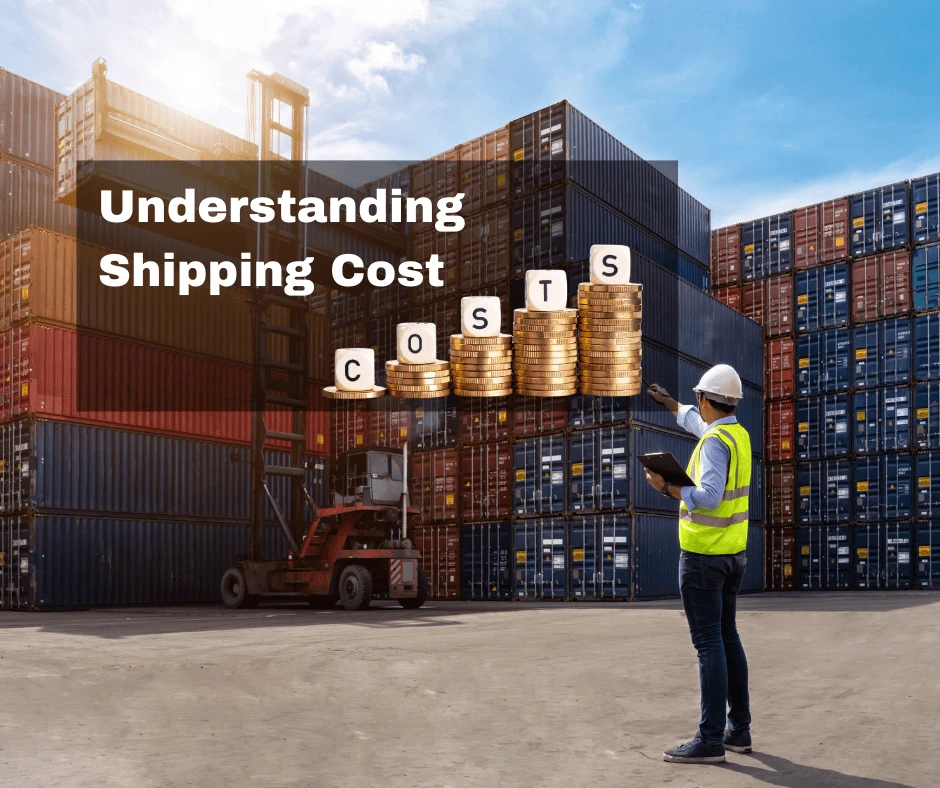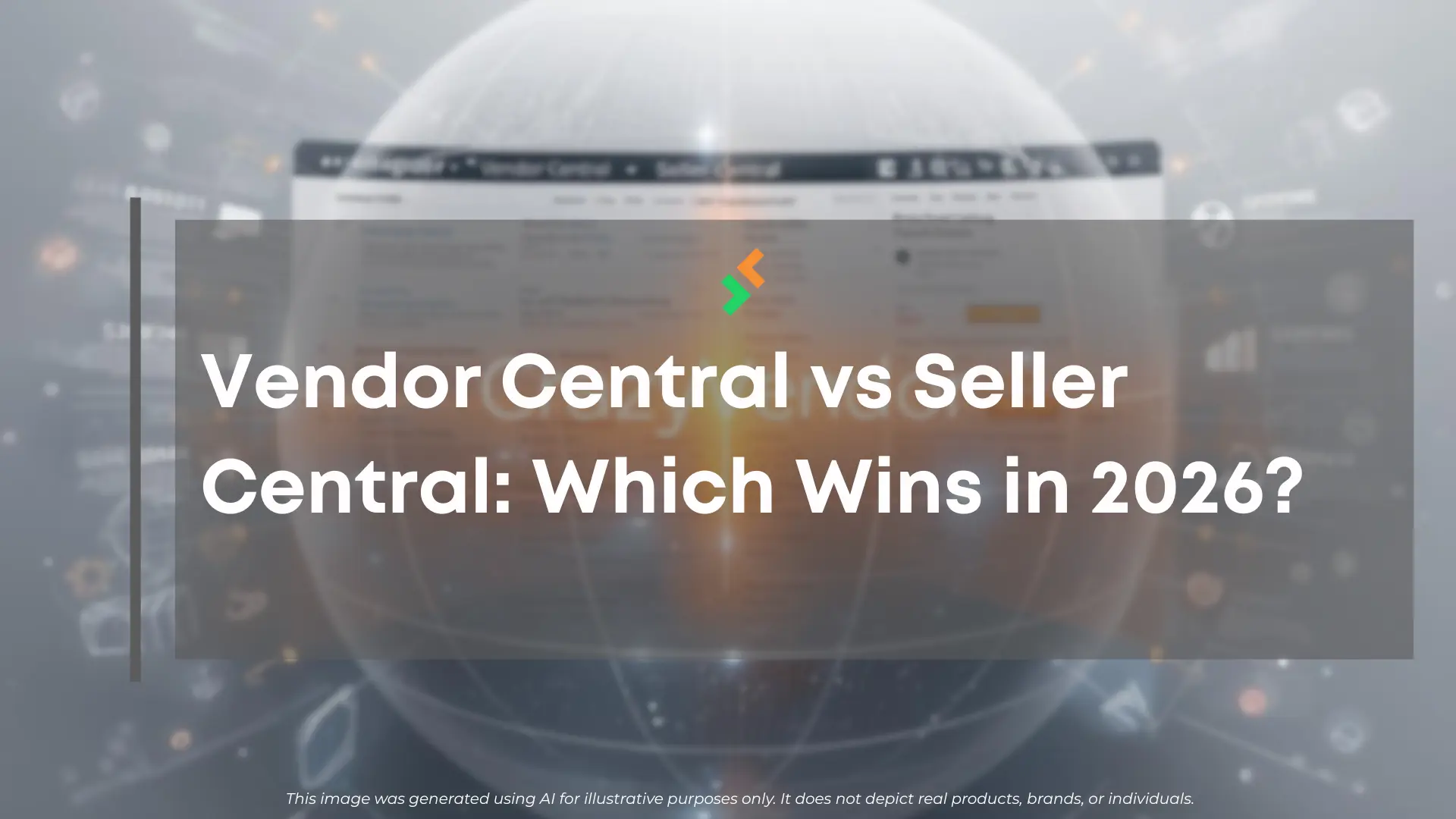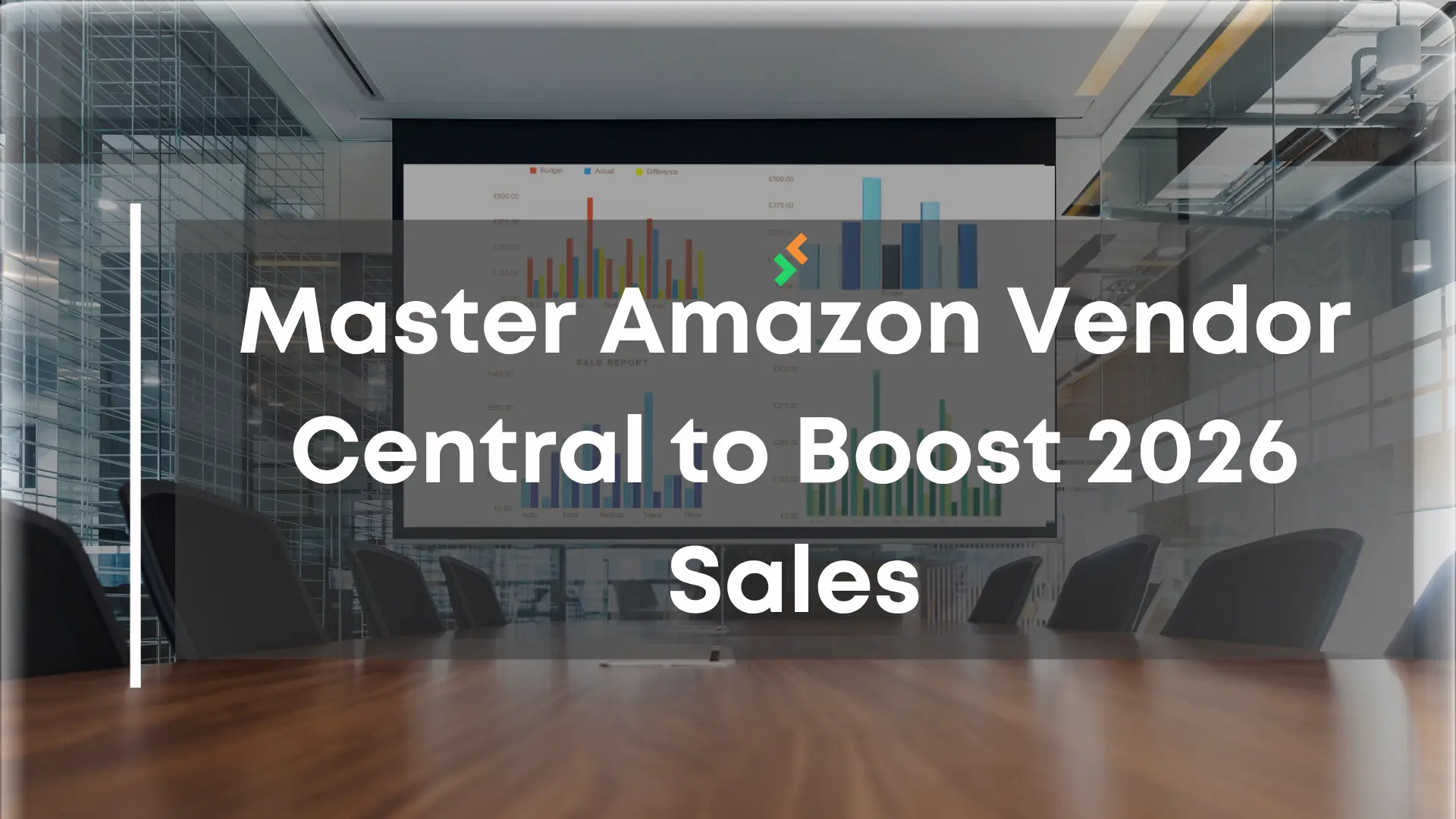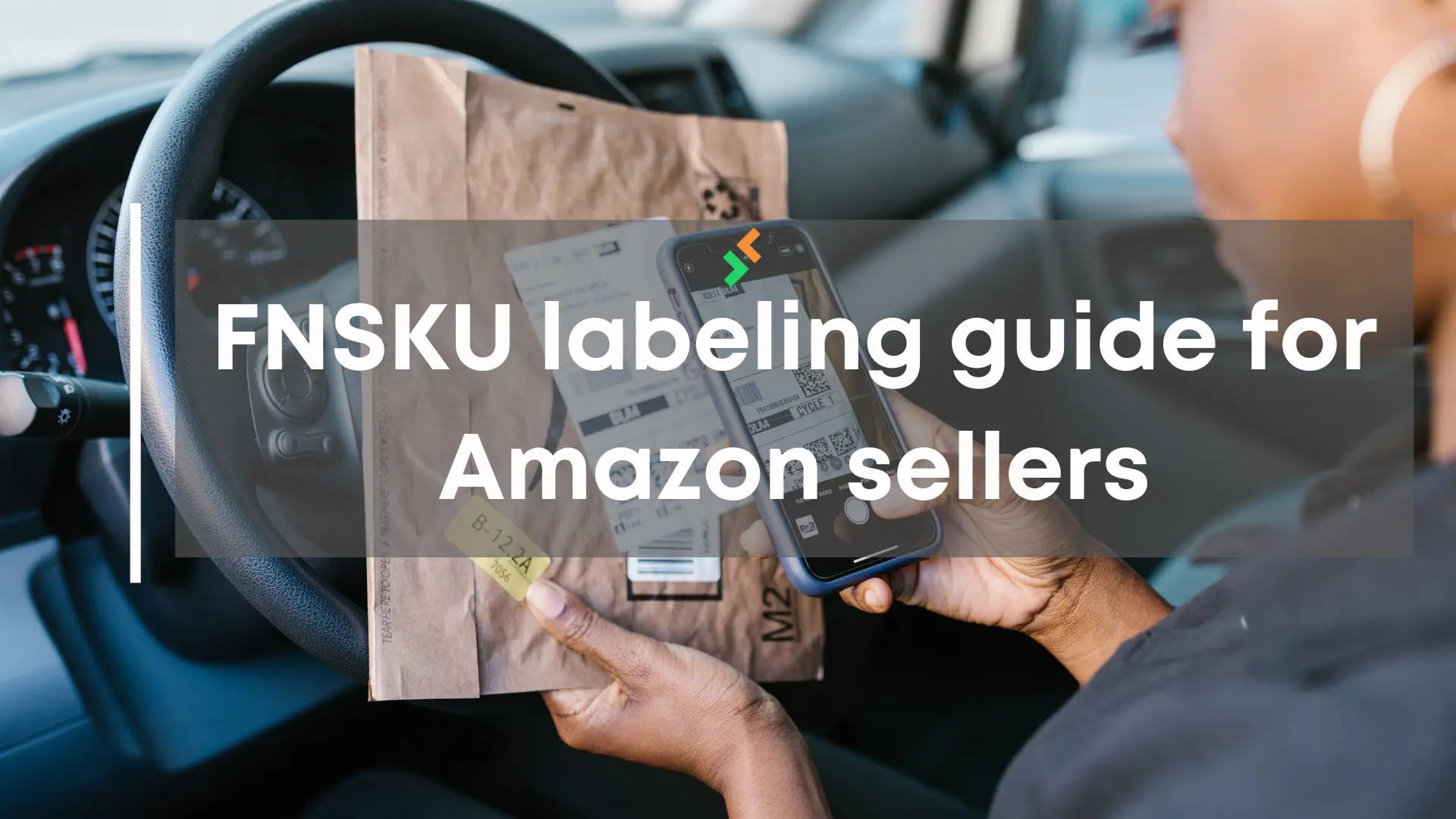
Imagine waking up to find 300 orders waiting to be shipped.
It’s not just the volume. It’s the complexities that arise with each package that echo the real challenge, from the precise calculation of dimensions and weight to the choice of carriers like FedEx or USPS. Without the right strategy, costs can balloon unexpectedly, causing a ripple effect throughout the business operations. But fear not, because by honing these shipping nuances, businesses can streamline their processes, reducing costs and elevating customer satisfaction simultaneously.
Table of Contents
Understanding Shipping Costs

Managing shipping costs is essential for profitability and customer satisfaction in eCommerce.
Several factors influence costs, including parcel weight, dimensions, destination, and volume. Carrier selection, whether express or standard, also impacts pricing. Optimizing these elements helps businesses cut expenses.
For international shipping, costs rise due to customs, tariffs, and taxes. Careful logistics planning ensures a competitive pricing strategy while maintaining efficiency.
Choosing the Right Delivery Vendor
Finally, adopting effective packaging practices can significantly offset high shipping costs. Employing the right-sized boxes and lightweight materials can reduce dimensional weight charges and cut down on unnecessary expenses. These careful adjustments, coupled with strategic vendor relationships, offer the means to maximize your savings, enhancing your business’s success through a tailored approach to shipping logistics.
Factors Affecting E-commerce Shipping
Shipping costs depend on dimensions, weight, packaging, service level, and destination. Major carriers use dimensional weight (DIM), making packaging efficiency crucial.
Faster shipping increases costs, so balancing speed and expenses is key. International shipping adds tariffs and documentation fees, requiring careful planning to stay competitive.
Volume and Discounts
Shipping volume directly affects costs, discounts, and carrier priority. Higher volume attracts better rates, making it essential for businesses to track shipments and negotiate with providers.
Partnering with bulk-friendly carriers and securing special rate cards can enhance cost efficiency. Regular shipment analysis helps businesses anticipate demand surges and strengthen carrier relationships, maximizing savings and growth.
Importance of Parcel Dimensions
Parcel dimensions heavily influence shipping costs, as carriers use dimensional weight pricing. Optimizing packaging with the right box sizes reduces fees while ensuring product protection.
Beyond cost savings, efficient dimension management enhances customer satisfaction and competitiveness. Businesses that refine packaging strategies can lower expenses, streamline shipping, and improve overall operations.
Managing Parcel Weight
Parcel weight remains a key factor in determining logistics expenses for e-commerce businesses. How can companies manage it effectively?
Since 2016, major carriers like FedEx and UPS have prioritized dimensional weight over physical weight, pushing businesses to refine their packaging with lighter materials while maintaining durability.
While altering a product’s size may not always be feasible, optimizing packaging should be standard practice. Using lightweight yet sturdy materials helps cut transportation expenses without compromising safety. Consolidating multiple items into a single parcel can also streamline costs.
Implementing these strategies enhances operational efficiency. Minimizing excess filler and designing well-fitted packages not only improves cost-effectiveness but also supports sustainability. Smart weight management directly impacts profitability and long-term growth.
Choosing Shipping Priorities
Choosing the right fulfillment strategy is essential for long-term growth. Businesses must balance speed and cost to meet diverse customer expectations—some value express options, while others prioritize affordability. Additionally, working closely with suppliers ensures a smooth product flow and on-time deliveries.
Fast, reliable fulfillment enhances the customer experience. Decision-making should account for more than just speed; factors like seasonal demand and future market expansion play a role in crafting cost-effective solutions.
Optimizing delivery priorities helps eCommerce businesses stay competitive, especially as the industry evolves. Regularly evaluating service options and trends ensures a well-calibrated strategy that maximizes customer satisfaction.
Balancing Domestic and Global Fulfillment
Managing local and cross-border deliveries presents unique challenges and opportunities. Domestic fulfillment is generally simpler, with lower costs and fewer regulatory barriers, making it easier to streamline operations.
Expanding globally, however, requires navigating customs, import restrictions, and complex logistics. Successful eCommerce businesses strike a balance—optimizing local deliveries for speed and efficiency while developing strategies to handle international complexities.
Ultimately, the right fulfillment approach depends on your business goals. Whether focusing on a national market or scaling internationally, a well-planned logistics strategy ensures smooth operations and customer satisfaction. Adaptability and foresight remain key to long-term success.
Smart Packaging for Cost and Efficiency
Optimizing packaging ensures products arrive safely while keeping costs in check. Using standard box sizes minimizes dimensional weight fees, reducing expenses. Custom-fit packaging prevents wasted space and unnecessary costs.
Understanding your product line’s packaging needs helps balance protection and cost efficiency. Sustainable materials and compact designs not only cut expenses but also enhance brand image. By aligning packaging with carrier pricing models, businesses achieve savings while maintaining product safety and sustainability.
Enhancing Branding Through Packaging
Packaging goes beyond mere protection–it represents your brand.
Thoughtful design reinforces business values, leaving a lasting impression on customers. Small details, like personalized notes, enhance the unboxing experience and build loyalty.
In a competitive eCommerce landscape, packaging helps brands stand out on platforms like Amazon, Etsy, and Shopify. By aligning with modern trends and consumer preferences, well-crafted packaging strengthens marketing messages while elevating customer engagement.
Benefits of Shipping Insurance

Shipping insurance acts as a safety net for businesses, ensuring financial protection against unforeseen events. It secures both the merchant and the customer, fostering trust and reliability. Insurance provides peace of mind for investors, knowing that their products are covered.
With shipping insurance, businesses are safeguarded against losses from damage, theft, or mishandling, creating a robust risk management strategy. This insurance is crucial in handling high-value shipments, especially in international e-commerce markets, where navigating customs processes can be unpredictable.
Moreover, having insurance can expedite claims resolution, allowing businesses to maintain seamless operations without significant disruptions. Companies can focus on growth rather than mitigating losses. Thus, for any e-commerce venture, safeguarding shipments with insurance enhances reputation and strengthens customer confidence.
Handling Product Returns
Handling returns effectively preserves customer trust and profitability. A clear, hassle-free policy enhances satisfaction and loyalty.
Streamlined processes, from easy initiation to transparent guidelines, improve the shopping experience. International returns require careful planning due to varying tariffs and costs.
Regularly refining return policies helps minimize issues, reduce return rates, and strengthen long-term customer relationships.
Evaluating Major Shipping Providers
When evaluating shipping providers, a blend of speed, cost, and reliability is key. Consider FedEx for swift deliveries, USPS for budget-friendly domestic routes, UPS for extensive scale capabilities, and DHL for international ventures, tailoring choices to business specifics.
USPS Shipping Services
USPS provides a comprehensive array of services tailored for small and medium-sized businesses, ensuring efficient and budget-conscious shipping. Their offerings, like Flat Rate boxe,s simplify costing processes significantly.
For e-commerce platforms like Amazon, Walmart, and eBay, USPS offers a “Priority Mail” option. This is not only a reliable way to ship products but also comes with tracking and a 2-3 day delivery guarantee.
USPS’s click-and-pay service simplifies shipping, enhancing convenience for growing ecommerce businesses.
USPS excels in offering competitive rates and benefits marginal businesses by reducing overhead shipping costs. Many ecommerce entrepreneurs favor USPS due to the postal service’s reliable coverage, extending across even the most remote domestic destinations. The integration with online platforms like Shopify and Etsy further enriches their services.
FedEx Delivery Solutions
FedEx stands out with its swift delivery options and innovative solutions tailored for diverse e-commerce needs.
- Speedy Delivery: Ensures a delivery timeframe ranging between one to four business days.
- Reward System: Offers significant rewards and incentives for recurring business use.
- Temperature Control: Specialized solutions for maintaining the quality of perishable goods.
- Pick-up Services: Allows convenient scheduling of pick-ups directly from your business location.
- Personalization: Utilize postcard services to enhance the customer experience with personal touches.
These services make FedEx a reliable choice for businesses seeking fast delivery and exceptional service.
By adopting FedEx solutions, you’re optimizing time efficiency and customer satisfaction simultaneously.
UPS for Large Shipments
UPS excels in managing large-scale freight, ensuring secure and efficient deliveries across vast networks. Their robust logistics system guarantees reliable transit, no matter the destination.
Bulk orders unlock cost advantages, making high-volume dispatches more economical. Additionally, real-time tracking enhances transparency, allowing businesses to monitor and refine their fulfillment processes.
UPS’s advanced tools provide valuable shipment insights, helping optimize operations. Whether scaling up or reinforcing market presence, partnering with UPS offers stability while keeping fulfillment costs in check.
DHL for International Deliveries
DHL stands as a powerful ally in the realm of international deliveries, offering exceptional services to e-commerce businesses.
Its robust network spans the globe, ensuring that no matter where your clients reside, DHL can deliver. This makes it an ideal choice for businesses with a diverse international customer base, extending their reach without concern.
Beyond just its expansive reach, DHL is renowned for integrating advanced real-time tracking technology. This feature keeps you and your customers informed every step of the way, providing peace of mind and fostering trust in your business operations.
Furthermore, their comprehensive customs assistance is invaluable, handling intricate regulatory requirements seamlessly so that your team can focus on other strategic priorities. By leveraging DHL’s expertise, you effectively mitigate potential challenges that can arise from global shipping complexities.
In conclusion, choosing DHL for international shipments can streamline logistics. It offers an efficient, reliable, and customer-friendly experience.
Importance of Efficient E-commerce Shipping
Efficient ecommerce shipping transcends mere logistics management, serving as a critical driver of customer satisfaction, operational excellence, and brand loyalty. It stands at the heart of successful online ventures.
Shipping inefficiencies quickly lead to lost customers.
Generally, modern shoppers expect quick and reliable service, holding ecommerce businesses (especially giants like Amazon) to high standards.
Timely deliveries help maintain seamless operations by ensuring that inventory levels meet customer demand, reducing stockouts.
An optimized shipping process allows for reduced shipping costs, exemplifying how an effectively managed supply chain operation can transform not only individual transactions but the customer’s overall experience.
Ultimately, the role of efficient shipping can’t be overstated. Putting optimized processes first ensures any small business can match consumer expectations consistently.
Explore Various Delivery Carriers
Every business must choose its delivery partners wisely.
Many carriers exist, each with their own strengths. The key is aligning your business’s unique needs with the right mix of shipping solutions, whether you are using an ecommerce platform like Shopify or are navigating the intricacies of selling on marketplaces such as Amazon, eBay, and Etsy. Choosing, then, is not about selecting one exclusive option but about crafting a combination that supports your strategic shipping goals.
USPS is ideal for small parcels.
For businesses requiring fast delivery, FedEx offers excellent support and rewards programs. For larger shipments, UPS provides specialized services tailored to business needs, making them invaluable partners for companies targeting expansion.
DHL shines in international logistics, offering comprehensive tracking and seamless integration with e-commerce platforms. Exploring these carriers isn’t just about comparing rates; it’s about understanding how each can elevate your brand by providing reliable, efficient, and cost-effective shipping solutions in 2023 and beyond.
Compare Shipping Costs and Services
In ecommerce, understanding your shipping options is crucial for maintaining cost efficiency and customer satisfaction. Many prominent carriers, such as USPS, FedEx, UPS, and DHL, offer a variety of services tailored to different business needs.
USPS provides competitive flat-rate options ideal for small parcels, making it a cost-effective choice for certain product categories.
Meanwhile, FedEx is renowned for its rapid delivery services, supplemented by an extensive rewards program for business users.
For shipments requiring specialization or larger sizes, UPS offers considerable discounts and adaptable services to match the unique needs of expanding businesses.
DHL, with its strong international reach, provides exceptional tracking capabilities and ecommerce integrations, which are perfect for global product distribution.
Ultimately, the best choice depends on your business’s mix of shipment requirements, geographical reach, and the specific services you deem necessary in achieving your strategic shipping objectives.
Optimize Packaging to Reduce Costs
Efficient packaging is essential for cost reduction.
To minimize costs, scrutinize the current packaging. It’s vital to choose the optimal combination of size and material to lessen dimensional weight charges, such as those imposed by carriers like FedEx and UPS. Furthermore, investing in the right balance of protection and compactness can significantly contribute to high packaging efficiency.
Lighter materials can also cut down costs.
By carefully selecting materials that are lighter yet sturdy, you ensure that the overall weight is decreased – a factor that shipping companies often use to calculate charges – while still providing sufficient protection for the products you’re shipping.
Incorporating innovative, eco-friendly packaging solutions also aligns with sustainable business practices, reinforcing trust in your brand. As more consumers prioritize sustainability, exploring such options could become advantageous by 2023 and beyond. This reduces environmental impact while enhancing packaging efficiency and amplifying brand equity and customer satisfaction.
Utilize Shipping Software for Efficiency
Shipping software revolutionizes logistics by automating processes that would otherwise devour time, such as labeling, order tracking, and rate comparison, so your focus can remain on core business priorities.
These solutions enhance accuracy and reduce errors which translate to improved customer satisfaction and repeat business.
Benefits of Automated Shipping Solutions
Automated shipping solutions simplify logistics, helping e-commerce owners streamline operations and reduce manual workload significantly. How exactly do these solutions revolutionize your business processes?
Since 2016, shipping automation has advanced tremendously, making it easier to integrate with platforms like Amazon, Walmart, eBay, and Shopify. These integrations offer real-time data synchronization, eliminating discrepancies and ensuring efficient management of your shipments.
Moreover, it’s no secret that accuracy is paramount in the ecommerce arena. By leveraging automated solutions, you mitigate the risk of human error, resulting in fewer shipping-related mishaps. Additionally, you can instantly compare multiple shipping options, identifying the most cost-effective and timely service for each order.
Financially, the gains from automation are vast, freeing up resources traditionally allocated to manual tasks and redirecting them to growth initiatives. In essence, automation aids in maintaining a consistent profit margin, thereby enhancing overall business health, particularly as your business scales.
Incorporating automated shipping solutions fosters operational excellence, enabling businesses to focus on growth and customer engagement.
Negotiate Better Rates with Carriers
Securing better delivery rates can significantly enhance your profit margins, reduce overhead, and enable smoother delivery for your e-commerce endeavors. Establishing a comprehensive communication strategy with your carriers is pivotal.
Always emphasize volume expectations in your initial conversations with carriers. A well-defined forecast helps set the stage for negotiating exceptional discounts.
Moreover, leveraging business relationships that have already been built, and demonstrating trust (reinforced through consistent transaction histories) can be advantageous.
Providing evidence of competitive rates or offers from other carriers incentivizes your current shipping partner to match or beat those prices, ensuring you receive unparalleled savings.
Regularly assess shifts in your shipping needs to refine your negotiations strategy, maximizing value by continuously evaluating market conditions and aligning with carriers that match your evolving shipping criteria.
Understand, that the goal is to pave the way for mutual benefit. Strong partnerships foster better deals and collaborative problem-solving, enhancing long-term business success.
Offer Free or Flat-Rate Shipping Options
Offering free or flat-rate shipping options as part of your ecommerce strategy can significantly enhance customer satisfaction, and may also boost your sales.
Flat-rate shipping offers a straightforward solution that simplifies costs for both customers.
Providing these shipping options can reduce the complexity associated with pricing and empower buyers with a sense of control and transparency, ultimately encouraging repeat purchases, increased basket sizes, and exploration of your wider product range.
The perception of value is crucial when deciding on these methods. Free shipping creates a sense of immediate benefit, while flat-rate shipping allows customers to predict and manage expenses effortlessly. By aligning your strategy with customer preferences, you not only enhance their experience but also foster loyalty and differentiation in a competitive marketplace.
Enhance Customer Experience with Fast Shipping
Fast shipping is no longer a luxury; it’s a necessity in contemporary commerce. Lightning-fast delivery not only distinguishes you from competitors but also elevates customers to a level of instant gratification that today’s digital shoppers have come to expect.
Incorporating speed into your shipping strategy, such as “same-day delivery”, positions you as a leader in customer satisfaction. It allows you to meet impulsive purchase desires, increasing the likelihood of conversion. By minimizing the time between the checkout process and product arrival, you’re not only meeting but also exceeding expectations, weaving a seamless shopping experience that evokes amazement and trust.
Clear Communication on Delivery Times
Establishing clear communication on delivery times is essential for enhancing customer satisfaction and trust in your e-commerce business.
- Set realistic delivery time expectations based on your shipping capabilities and locations.
- Provide estimates during the checkout process, ensuring customers are informed before purchase.
- Send timely updates through email or text to keep customers informed about their order status.
- Offer reliable tracking tools allowing customers to monitor the progress of their packages.
Transparent communication reduces customer anxiety by setting clear expectations from confirmation to arrival.
Ultimately, consistent updates foster trust, underpinning a strong brand-customer relationship.
Implement Sustainable Shipping Practices
With the growing emphasis on sustainability, how can businesses in the ecommerce sector bring green shipping initiatives to life?
Incorporating eco-friendly shipping materials like biodegradable packaging or reusable containers protects the environment while enhancing brand loyalty. Sustainable choices often resonate with conscientious consumers, creating a positive impact.
Opt for shipping carriers committed to sustainability, such as those investing in carbon-neutral delivery or fuel-efficient vehicles. Collaborating with eco-minded partners strengthens your business’s environmental commitment.
Encourage and potentially incentivize customers to choose slower shipping options, which generally have a smaller carbon footprint. Offering delivery incentives for bulk orders can further reduce environmental impact.
Embracing these sustainable practices not only reflects well on your brand but also supports a healthier planet.
Managing Returns Efficiently
Efficient return management is essential for maintaining customer satisfaction and sustaining growth.
In 2023, as the ecommerce landscape continues to evolve, businesses must implement streamlined return processes to keep customers engaged. Establishing a transparent and hassle-free return policy can mitigate the challenges that come with reverse logistics, thus bolstering consumer trust.
It’s vital for businesses to ensure their return policies are easily accessible and straightforward, outlining clear procedures for both domestic and international returns. Providing prepaid labels and simplifying refund or exchange processes can make a significant difference in customer experience.
Leveraging technology such as automated return management systems can further enhance efficiency. These systems can track return activities from initiation to resolution, providing valuable insights into return trends and anomalies.
By understanding and managing returns effectively, businesses can transform potential setbacks into opportunities for enhancing customer loyalty and operational excellence.
Use Analytics to Monitor Shipping Performance
Harnessing analytics is essential to optimizing logistics performance. Through a meticulous evaluation of transportation data, a treasure trove of insights can be uncovered, enhancing both efficiency and customer satisfaction.
Analytics provide precise metrics on delivery times and fulfillment methods, illuminating areas needing improvement.
For example, analytics tools can identify trends in late arrivals, offering actionable insights for streamlining distribution processes and schedules.
Additionally, analytics help in comparing carrier performance and delivery solutions, empowering businesses with informed decisions.
Companies can leverage this information not only to adjust current fulfillment tactics but to anticipate potential challenges, such as seasonal demand fluctuations or sudden market shifts.
Embrace the power of data analytics today and watch your e-commerce venture flourish. Continuous improvement backed by clear data insights is key in this competitive digital economy.
Case Studies: Success Stories from Major Platforms
Numerous e-commerce entrepreneurs on platforms like Amazon, Walmart, eBay, Etsy, and Shopify have demonstrated that strategic shipping solutions can transform an operation, reducing overheads, and unlocking new revenue streams. Their knack for implementing data-driven decisions has resulted in streamlined delivery processes central to their growth.
Successful case studies underscore how optimized delivery strategies, coupled with innovative technologies, empower small businesses to thrive amidst the giants.
Lessons Learned from Amazon, Walmart, and Shopify
Amazon, Walmart, and Shopify each offer invaluable lessons in optimizing e-commerce shipping and fulfillment efficiencies.
Amazon’s mastery of speed and reliability has been a cornerstone of its triumph, blossoming from agile logistics operations. Leveraging vast networks and sophisticated data analytics, they demonstrate how minimizing transit times and prioritizing customer satisfaction can significantly bolster brand loyalty and repeat business.
Similarly, Walmart, with its extensive store network, exemplifies the power of integrating in-store infrastructure with online offerings. They manage to provide cost-effective shipping options and swift deliveries by harnessing both their vast distribution centers and local stores, positioning themselves as a formidable omnichannel retailer.
From Shopify’s example, we glean the importance of enabling small businesses with robust e-commerce tools tailored for independent sellers. By offering a platform that integrates various shipping solutions seamlessly, Shopify empowers entrepreneurs to maintain control while accessing the advantages of large-scale technological solutions, thus maintaining competitiveness in a fast-paced market.
Finding the Right Balance Between Cost and Delivery Speed
Striking the right balance between cost and speed is crucial for maintaining customer satisfaction and profitability. Prioritizing deliveries based on product type, customer expectations, and operational efficiency ensures your business stays competitive. By leveraging data, negotiating better carrier rates, and offering flexible options, you can enhance the overall shopping experience without inflating expenses.
At CrazyVendor, we help eCommerce businesses streamline logistics and optimize shipping strategies for maximum efficiency. Explore our solutions to take control of your fulfillment process while keeping costs in check.
You can also follow us on social media for more e-commerce insights and updates!










